Pseudo-mathematics And Financial Charlatanism Pdf
There is nothing more practical than a good theory. Many models successfully applied in scientific fields are tremendously useful in addressing critical investment management problems. I have been fortunate enough to meet and work extensively with some of the leading figures in Pure Mathematics, Mathematical Finance, Machine Learning, Market Microstructure and Econometrics. The majority of our findings are kept proprietary. From time to time, however, we decide to publish some of them, hence the irregular frequency of the following publications.
AUTHORS
TITLE
REFERENCE
INDEX
SUMMARY

Bailey, David H. ; Lopez de Prado, Marcos
Significance (Royal Statistical Society), Forthcoming 2021
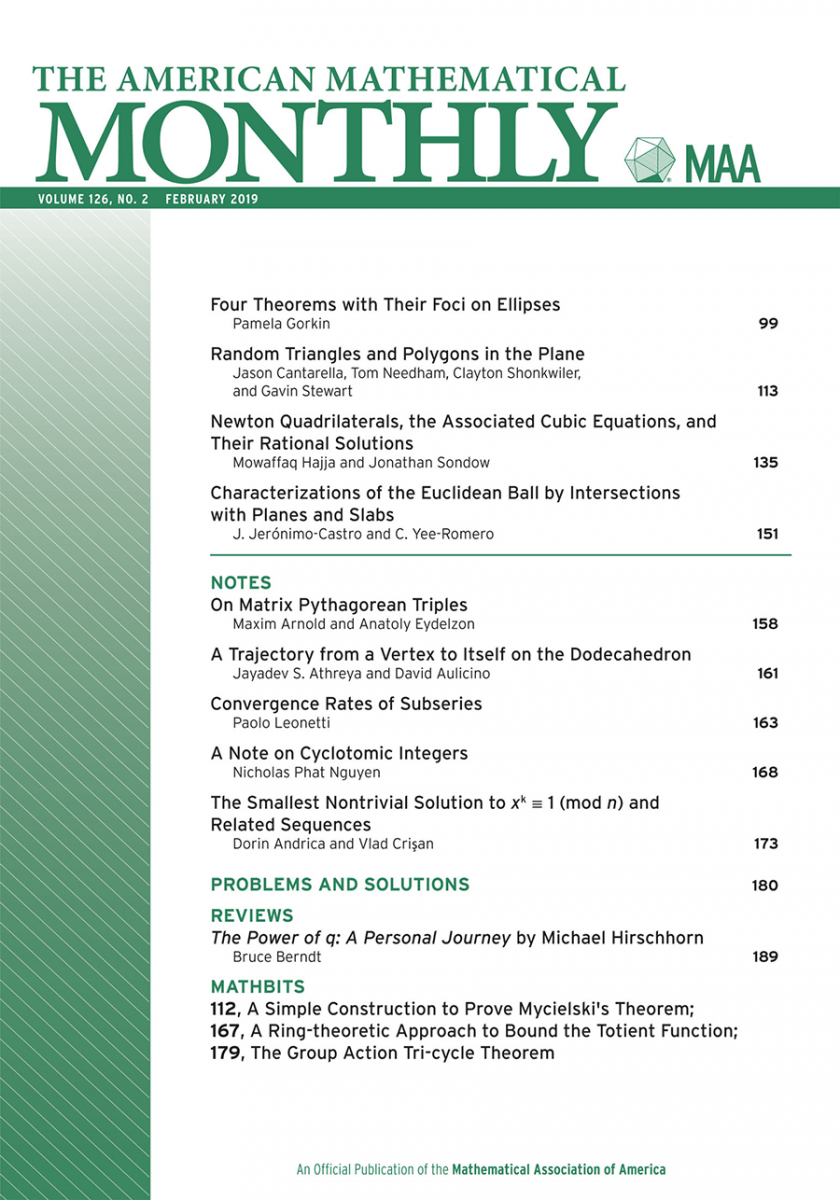
Lopez de Prado, Marcos ; Bailey, David H.
American Mathematical Monthly, 128(9), pp. 825-831. 2021.
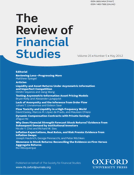
Easley, David ;
Lopez de Prado, Marcos ;
O'Hara, Maureen ; Zhang, Zhibai
Microstructure in the Machine Age
Review of Financial Studies, 34(7), pp. 3316-3363. 2021.
JCR (5Y IF = 6.663)
We demonstrate how a machine learning algorithm can be applied to predict and explain modern market microstructure phenomena. We find that some microstructure-based measures are useful for out-of-sample prediction of various market statistics, leading to questions about the efficiency of markets. Our results are derived using 87 of the most liquid futures contracts across all asset classes.
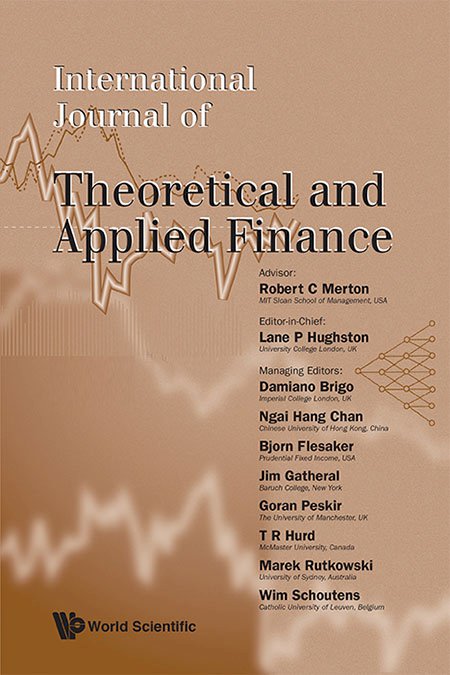
Lipton, Alexander; Lopez de Prado, Marcos
International Journal of Theoretical and Applied Finance, 23 (8), 2050056. 2020.
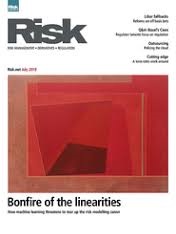
Lipton, Alexander; Lopez de Prado, Marcos
Risk Magazine, June 2020.
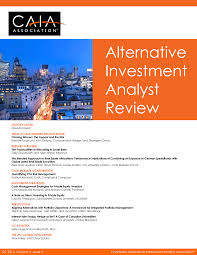
Lopez de Prado, Marcos
Tactical Investment Algorithms

Lipton, Alexander; Lopez de Prado, Marcos
Risk Magazine, April 2020.
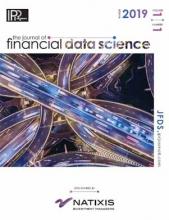
Song, Jung H.; Lopez de Prado, Marcos ; Simon, Horst D. ; Wu, Kesheng
Journal of Financial Data Science, 1(4), pp. 124-138. 2019.
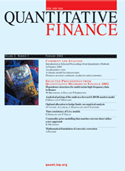
Lopez de Prado, Marcos; Lewis, Michael
Detection of False Investment Strategies Using Unsupervised Learning Methods
Quantitative Finance, 19(9), pp.1555-1565 . 2019.
JCR (IF = 1.170)
MathSciNet; Zentralblatt MATH; Scopus

Lopez de Prado, Marcos ; Fabozzi, Frank
Journal of Financial Data Science, 1(4), pp. 1-8. 2019.
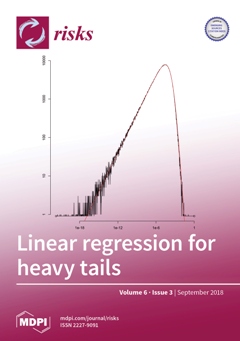
Lopez de Prado, Marcos
Optimal Risk Budgeting Under a Finite Investment Horizon
Risks , 7(3), pp. 86-120. 2019.
Scopus-SciVerse
Growth Optimal Portfolio (GOP) theory determines the path of bet sizes that maximize long-term wealth. This multi-horizon goal makes it more appealing among practitioners than myopic approaches, like Markowitz's efficient frontier. The GOP literature typically considers risk-neutral investors with an infinite investment horizon. In this paper, we compute the optimal bet sizes in the more realistic setting of risk-averse investors with finite investment horizons.

Lopez de Prado, Marcos
Journal of Financial Data Science, 1(1), pp. 99-110. 2019.
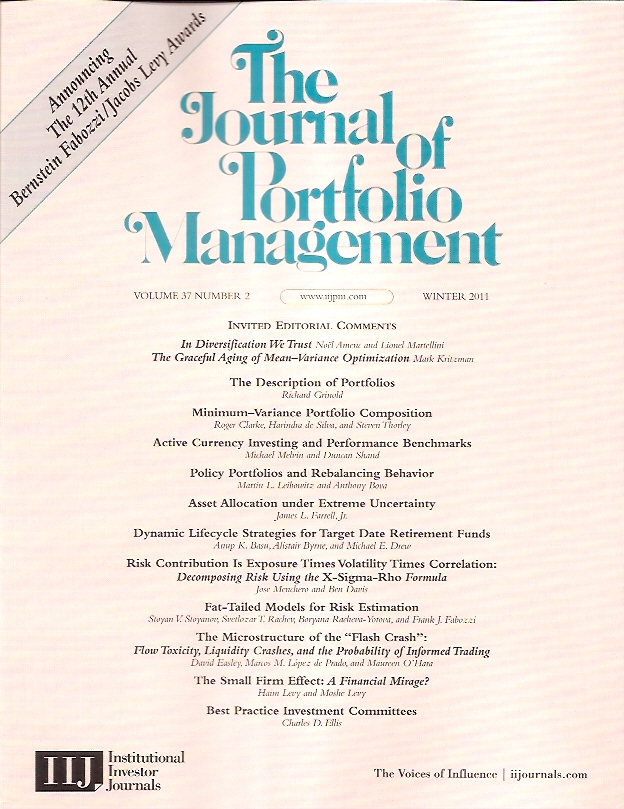
Simonian, Joseph; Lopez de Prado, Marcos ; Fabozzi, Frank
Journal of Portfolio Management, 45(1), pp. 1-4. 2018.

Fabozzi, Frank; Lopez de Prado, Marcos
Journal of Portfolio Management, 45(1), pp. 141-147. 2018.
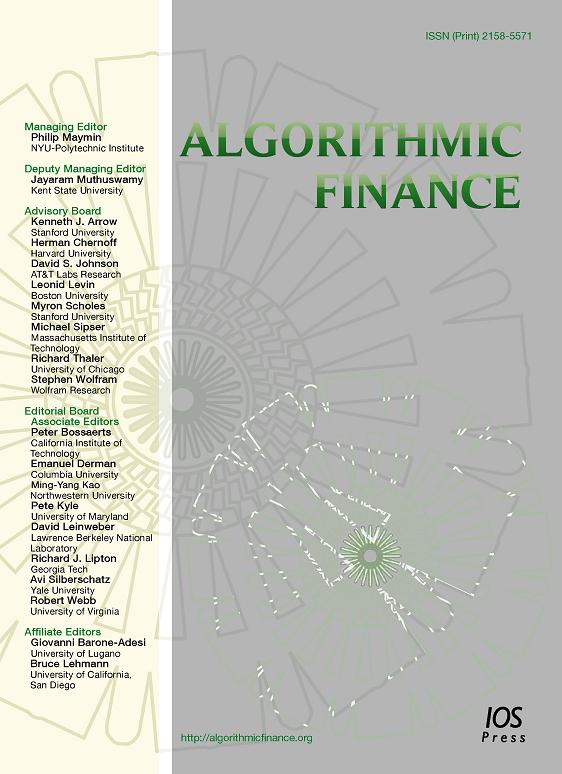
Aparicio, Diego; Lopez de Prado, Marcos
Algorithmic Finance, 7(1-2), pp. 53-61. 2018.

Lopez de Prado, Marcos
Journal of Portfolio Management, 44(6), pp. 120-133. 2018.
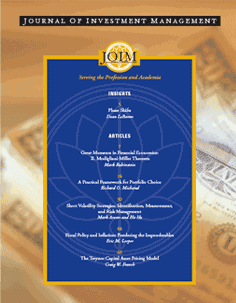
Journal of Investment Management, 16(2), pp. 47-64. April 2018.
We develop a novel ranking methodology to rank the market forecaster. In particular, we distinguish forecasts by their specificity, rather than considering all predictions and forecasts equally important, and we also analyze the impact of the number of forecasts made by a particular forecaster. We have applied our methodology on a dataset including 6,627 forecasts made by 68 forecasters.

Lopez de Prado, Marcos
Oxford Business Law, March, 2018.

Lopez de Prado, Marcos ; Fabozzi, Frank
Journal of Portfolio Management, 44(1), pp. 1-4. Fall 2017.
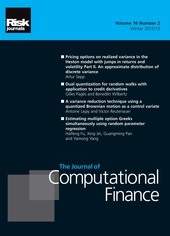
Bailey, David H. ; Borwein, Jon M. ; Lopez de Prado, Marcos ; Zhu, Jim
Journal of Computational Finance, 20(4), pp. 39-70. 2017.
JCR (5Y IF = 0.831)
We propose a framework that estimates the probability of backtest overfitting (PBO) specifically in the context of investment simulations, through a numerical method that we call combinatorially symmetric cross-validation (CSCV). We show that CSCV produces accurate estimates of the probability that a particular backtest is overfit.

Lopez de Prado, Marcos
Journal of Portfolio Management, 43(4), pp. 5-9. Summer 2017.

Bailey, David H. ; Borwein, Jon M. ; Lopez de Prado, Marcos
Journal of Investment Management, 15(1), pp.1-13. 2017.
We demonstrate a computer program that designs a portfolio consisting of common securities, such as the constituents of the S&P 500 index, that achieves any desired profile via in-sample backtest optimization. These portfolios typically perform erratically on more recent, out-of-sample data, which is symptomatic of selection bias. One implication of these results is that so-called smart beta funds, which are designed in-sample to deliver a desirable performance pro file, are likely to disappoint out-of-sample.
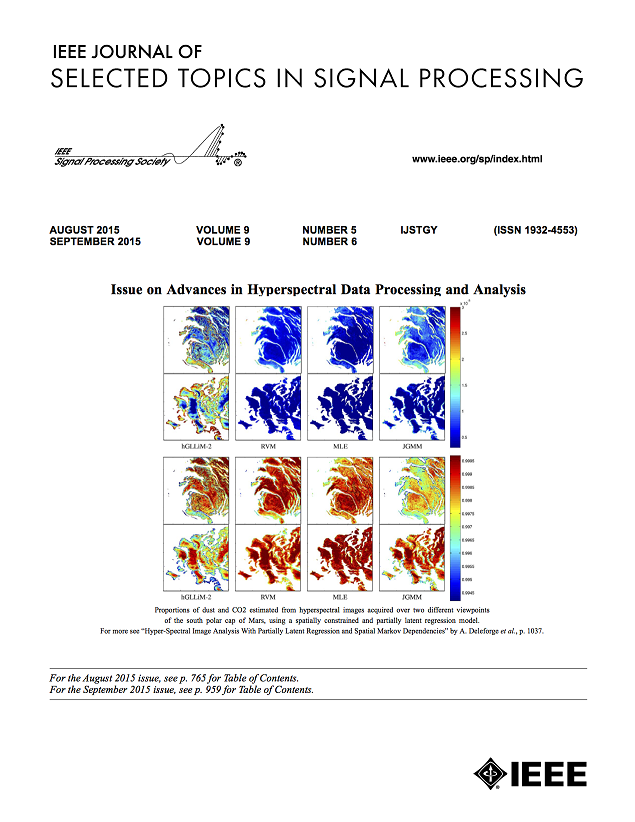
Rosenberg, Gili; Poya Haghnegahdar; Goddard, Phil; Lopez de Prado, Marcos ; Carr, Peter ; Wu, Kesheng
IEEE Journal of Selected Topics in Signal Processing, 10(6), pp. 1053-1060. September 2016.
JCR (IF = 4.361)
We solve a multi-period portfolio optimization NP-complete problem using D-Wave's quantum annealer. The formulation incorporates transaction costs (including permanent and temporary market impact) and, significantly, the solution does not require the inversion of a covariance matrix. The discrete multi-period portfolio optimization problem we solve is significantly harder than the continuous variable problem.

Lopez de Prado, Marcos
Journal of Portfolio Management, 43(1), pp. 5-8. Fall 2016.
Lopez de Prado, Marcos
Kinetic Component Analysis
Journal of Investing, 25(3), pp. 142-154. Fall 2016.
We introduce Kinetic Component Analysis (KCA), a state-space application that extracts the signal from a series of noisy measurements by applying a Kalman Filter on a Taylor expansion of a stochastic process. We show that KCA presents several advantages compared to other popular noise-reduction methods such as Fast Fourier Transform (FFT) or Locally Weighted Scatterplot Smoothing (LOWESS).

Lopez de Prado, Marcos
Journal of Portfolio Management, 42(4), pp. 59-69. Summer 2016.

Lopez de Prado, Marcos
Algorithmic and High Frequency Trading
Quantitative Finance, 16(8), pp. 1175-1176, 2016.
JCR (IF = 1.170)
MathSciNet; Zentralblatt MATH; Scopus
A review of the monograph recently published by Cambridge University Press.
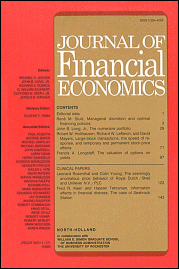
Easley, David ;
Lopez de Prado, Marcos ;
O'Hara, Maureen
Discerning Information From Trade Data
Journal of Financial Economics, 120(2), pp. 269-286. May 2016.
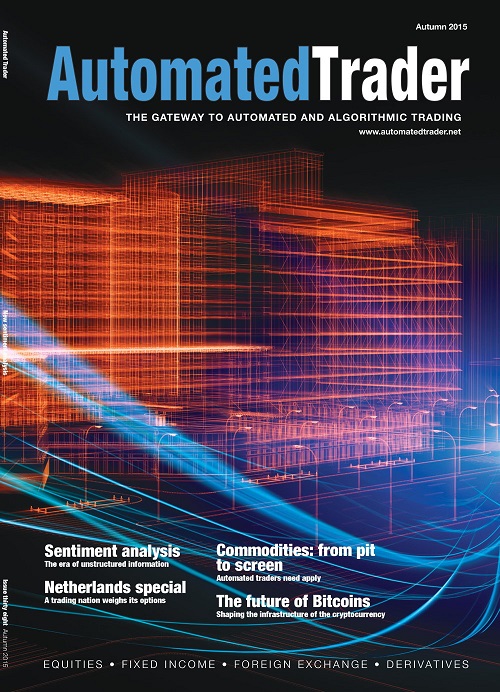
Bailey, David H. ; Borwein, Jon M. ; Salehipour, Amir; Lopez de Prado, Marcos ; Zhu, Jim
Automated Trader, Issue 39. Spring 2016.
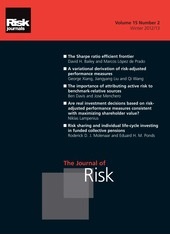
Bailey, David H. ;
Lopez de Prado, Marcos
Stop-Outs Under Serial Correlation and "The Triple Penance Rule"
Journal of Risk, 18(2), pp. 61-93. Fall 2015.
JCR (5Y IF = 1.794)
We develop a framework for informing the decision of stopping a portfolio manager or investment strategy once it has reached a loss or time under water limit for a certain confidence level. Under standard portfolio theory assumptions, we show that it takes three times longer to recover from the expected maximum drawdown than the time it takes to produce it, with the same confidence level. Mathematical Appendices available here.

Lopez de Prado, Marcos
Recent Trends in Empirical Finance
Journal of Portfolio Management, 42(1), pp. 29-33. Fall 2015.
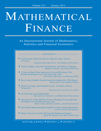
Easley, David ;
Lopez de Prado, Marcos ;
O'Hara, Maureen
Optimal Execution Horizon
Mathematical Finance, 25(3), pp. 640-672. July 2015.
JCR (IF = 2.714)
MathSciNet; Zentralblatt MATH
Execution traders know that market impact greatly depends on whether their orders lean with or against the market. And yet, the literature on optimal execution strategies rarely incorporates order imbalance in the modeling of transaction costs. We introduce the OEH model, which considers this fact when determining the optimal trading horizon for an order, an input required by many sophisticated execution strategies.

Lopez de Prado, Marcos
The Future of Empirical Finance
Journal of Portfolio Management, 41(4), pp. 140-144. Summer 2015.
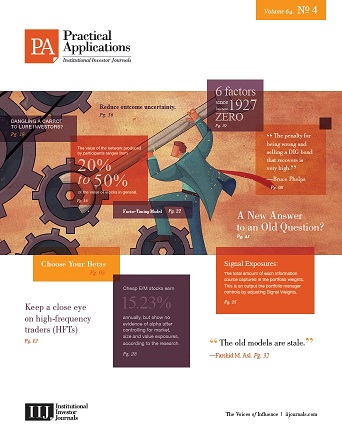
Lopez de Prado, Marcos
Practical Applications, Institutional Investor Journals , 2(3), pp. 1-3, Winter 2014.
Quantitative Meta-Strategies (QMS) are quantitative strategies designed to manage investment strategies. As a field, QMS can be defined as the mathematical study of the decisions made by the supervisor of a team of investment managers, regardless of whether their investment style is systematic or discretionary.
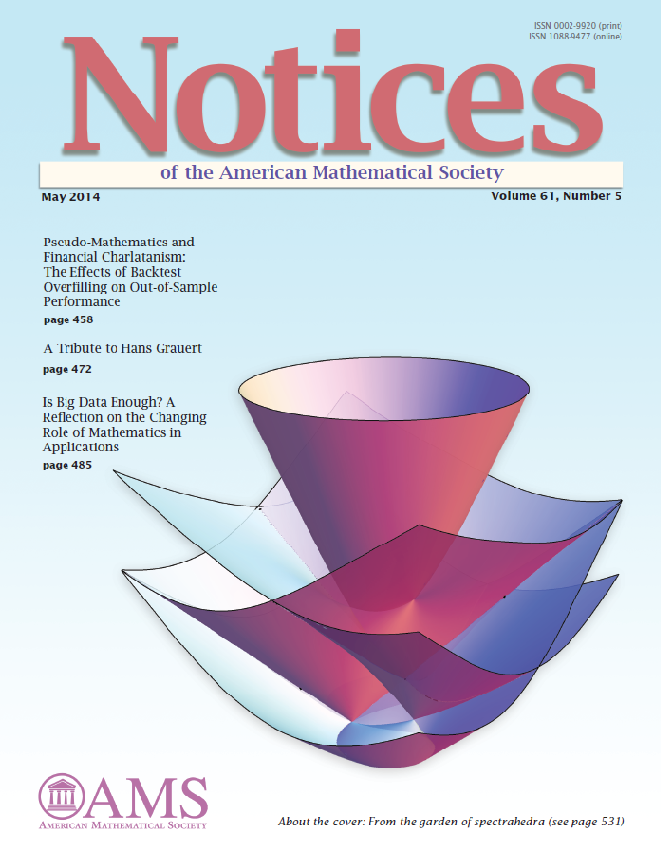
Bailey, David H. ; Borwein, Jon M. ; Lopez de Prado, Marcos ; Zhu, Jim
Pseudo-Mathematics and Financial Charlatanism: The Effects of Backtest Overfitting on Out-Of-Sample Performance
Notices of the American Mathematical Society, 61(5), pp. 458-471. May 2014.
MathSciNet; Zentralblatt MATH
We prove that high simulated performance is easily achievable after backtesting a relatively small number of alternative strategy configurations, a practice we denote �backtest overfitting�. Because financial analysts rarely report the number of configurations tried for a given backtest, investors cannot evaluate the degree of overfitting in most investment proposals. This is one of the first Mathematical Finance papers published in the Notices of the AMS, the official membership journal of the American Mathematical Society.

Lopez de Prado, Marcos ;
Foreman, Matthew
A Mixture of Gaussians Approach to Mathematical Portfolio Oversight: The EF3M Algorithm
Quantitative Finance, 14(5), pp. 913-930. 2014
JCR (IF = 1.170)
MathSciNet; Zentralblatt MATH; Scopus
We solve the "Nonic Polynomial problem" posed by Karl Pearson in the 1894 edition of the Philosophical Transactions of the Royal Society . We apply quantitative methodologies originated in the Mathematical Theory of Evolution to model the dynamics of investment styles within a fund.

Bailey, David H. ;
Lopez de Prado, Marcos
The Deflated Sharpe Ratio: Correcting for Selection Bias, Backtest Overfitting and Non-Normality
Journal of Portfolio Management, 40 (5), pp. 94-107. 2014 (40th Anniversary Special Issue)
Other authors in this JPM Special Issue include: Cliff Asness (AQR), John Bogle (Vanguard), Mohamed El-Erian (Allianz), Robert Kapito (BlackRock), Mark Kritzman (Windham), Martin Leibowitz (Morgan Stanley), Burton Malkiel (Princeton) and Marc Reinganum (State Street).

Calkin, Neil ; Lopez de Prado, Marcos
Stochastic Flow Diagrams
Algorithmic Finance, 3(1), pp. 21-42. 2014.
We introduce Stochastic Flow Diagrams (SFDs), a new mathematical approach to represent complex dynamic systems into a single weighted digraph. This topological representation provides a way to visualize what otherwise would be a morass of equations in differences.

Song, Jung H.; Lopez de Prado, Marcos ; Simon, Horst D. ; Wu, Kesheng
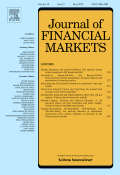
Easley, David ;
Lopez de Prado, Marcos ;
O'Hara, Maureen
VPIN and the Flash Crash: A Rejoinder
Journal of Financial Markets , 17(1), pp. 47-52. 2014.
JCR (5Y IF = 2.234)
Discusses implementation cautions with regards to VPIN empirical studies.

Calkin, Neil ; Lopez de Prado, Marcos
The Topology of Macro Financial Flows: An Application of Stochastic Flow Diagrams
Algorithmic Finance, 3(1), pp. 43-85. 2014.
We construct a network of financial instruments and show how Stochastic Flow Diagrams (SFDs) allow researchers to monitor the flow of capital across the financial system. Because our approach is dynamic, it models how and for how long a financial shock propagates through the system.
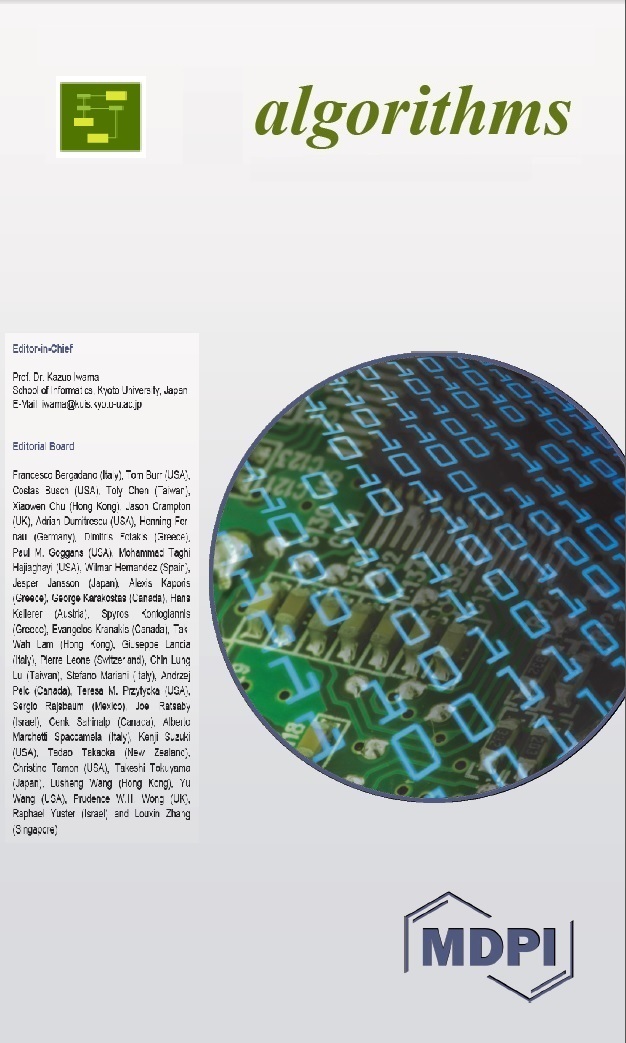
Bailey, David H. ;
Lopez de Prado, Marcos
An Open-Source implementation of the Critical-Line Algorithm for Portfolio Optimization
Algorithms , 6(1), pp. 169-196. 2013.
MathSciNet ; Zentralblatt MATH ; Scopus-SciVerse
We fill a gap in the literature by providing a well-documented, step-by-step open-source implementation of the Critical-Line Algorithm (CLA) in a scientific language. We discuss the logic behind CLA following the algorithm�s decision flow. In addition, we have developed several utilities that facilitate the answering of recurrent practical problems.

Bailey, David H. ;
Lopez de Prado, Marcos
The Strategy Approval Decision: A Sharpe Ratio Indifference Curve Approach
Algorithmic Finance , 2(1), pp. 99-109. 2013.
The problem of capital allocation to a set of strategies could be partially avoided, or at least greatly simplified, with an appropriate strategy approval decision process. This paper proposes such procedure, by splitting the capital allocation problem into two sequential stages: Strategy approval and portfolio optimization.

Bailey, David H. ;
Lopez de Prado, Marcos
The Sharpe Ratio Efficient Frontier
Journal of Risk, 15(2), pp. 3-44, Winter. 2012.
JCR (5Y IF = 1.794)
Introduced the Probabilistic Sharpe Ratio (PSR), a new uncertainty-adjusted investment skill metric that corrects the inflationary effect that Non-Normality has on Sharpe Ratio estimates. It also determines the Minimum Track Record Length (MinTRL) needed to evidence skill. A Sharpe Ratio Efficient Frontier (SEF) arises, based on return-on-risk rather than return-on-capital.
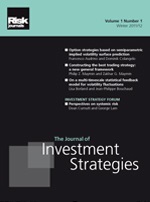
Bailey, David H. ;
Lopez de Prado, Marcos
Balanced Baskets: A new approach to Trading and Hedging Risks
Journal of Investment Strategies , 1(4), pp. 21-62. Fall, 2012.
Introduced the notion of Balanced Baskets, which are portfolios of instruments that evenly spread risks or exposures across their constituents without requiring a change of basis, like PCA. It also developed the algorithms needed to compute such baskets in hedging as well as trading applications. Finally, it also contributed a new procedure for covariance clustering.

Easley, David ;
Lopez de Prado, Marcos ;
O'Hara, Maureen
The Volume Clock: Insights into the High Frequency Paradigm
Journal of Portfolio Management , 39(1), pp. 19-29. Fall, 2012.
JCR (IF = 0.812)
This paper has been cited by Market Regulators [ 1 , 2 , 3 ] for deepening their understanding of the phenomenon of High Frequency Trading (HFT), beyond the simple notion of "speed trading". In particular, it argues that at the heart of HFT is a new investment paradigm based on making decisions in Volume Time. IIJ's Practical Applications (Fall 2013) featured this work.

Easley, David ;
Lopez de Prado, Marcos ;
O'Hara, Maureen
Flow Toxicity and Liquidity in a High Frequency World
Review of Financial Studies , 25(5), pp. 1457-1493. 2012.
JCR (5Y IF = 6.663)
Developed a new procedure to estimate the flow toxicity impacting market makers, the Volume Synchronized Probability of Informed Trading ( VPIN ). This metric has been shown to anticipate liquidity crises (including the Flash Crash) and to be a good predictor of toxicity-induced volatility. CFTC's HFT guidelines cite this publication.

Lopez de Prado, Marcos ;
Leinweber, David
Advances in Cointegration and Subset Correlation Hedging Methods
Journal of Investment Strategies , 1(2), pp. 67-115. Spring, 2012.
Introduced two new hedging methods, called Dickey-Fuller Optimization (DFO) and Mini-Max Subset Correlation (MMSC). The former is a dynamic, cointegration based method while the latter is a static, balanced-basket method to evenly distribute exposure among portfolio constituents. It also generalized the Box-Tiao Canonical Decomposition (BTCD) method.
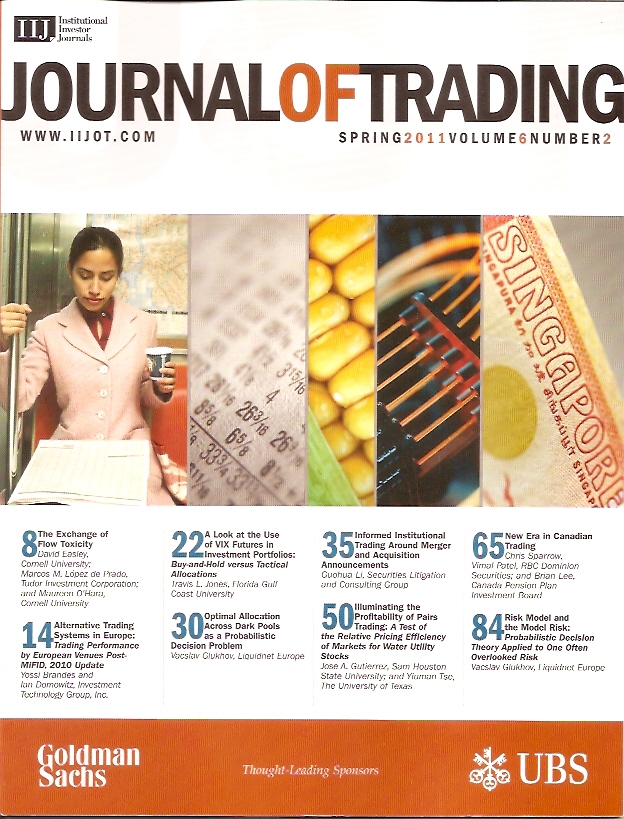
Easley, David ;
Lopez de Prado, Marcos ;
O'Hara, Maureen
The Exchange of Flow Toxicity
Journal of Trading , 6(2), pp. 8-13. Spring, 2011.
It introduced the concept of "Market Makers' Asymmetric Payoff Dilemma", which characterizes a liquidity provider as the seller of a real-option to be adversely selected. Since that option cannot be dynamically replicated, a new contract is proposed to allow market makers to hedge such risks.

Easley, David ;
Lopez de Prado, Marcos ;
O'Hara, Maureen
The Microstructure of the �Flash Crash�: Flow Toxicity, Liquidity Crashes and the Probability of Informed Trading
Journal of Portfolio Management , 37(2), pp. 118-128. Winter, 2011.
JCR (IF = 0.812)
This has become one of the most read papers in Finance, according to SSRN. It analyses the "Flash Crash" from a microstructure perspective, and concludes that it was a liquidity crises which resulted from market makers receiving persistently toxic order flow for at least 2 hours before the crash actually unfolded.
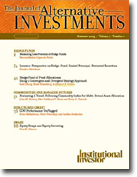
Lopez de Prado, Marcos ;
Peijan, Achim
Measuring Loss Potential of Hedge Fund Strategies
Journal of Alternative Investments , 7(1), pp. 7-31. Summer, 2004.
It developed a new risk framework for assessing hedge funds' loss potential, considering Non-Normal and Serially-Correlated returns. It shows that the IID Normal assumption, ubiquitous in financial risk modeling, leads to a great underestimation of the loss potential of hedge funds.
AUTHORS
TITLE
REFERENCE
SUMMARY
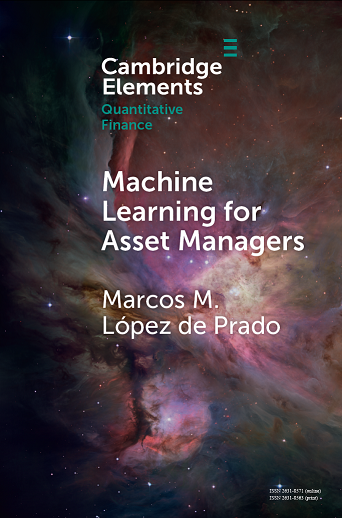
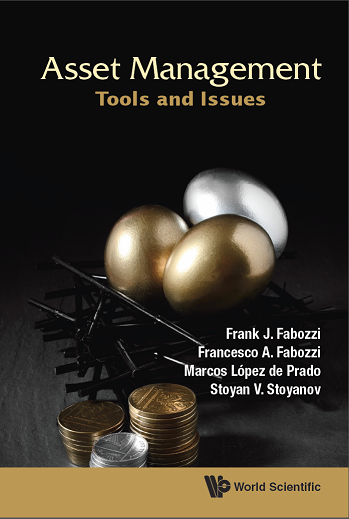
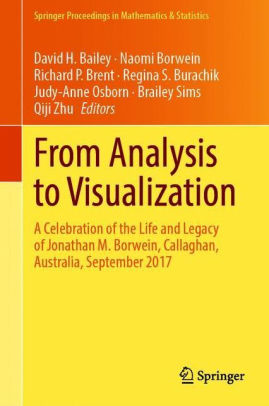
This study develops a novel ranking methodology to rank market forecasters. In particular, we distinguish forecasts by their specificity, rather than considering all predictions and forecasts equally important, and we also analyze the impact of the number of forecasts made by a particular forecaster. We have applied our methodology on a dataset including 6,627 forecasts made by 68 forecasters.
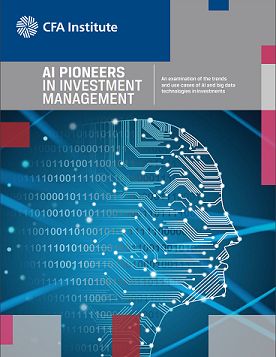
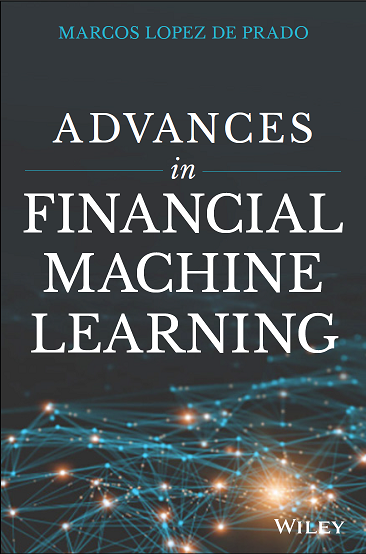
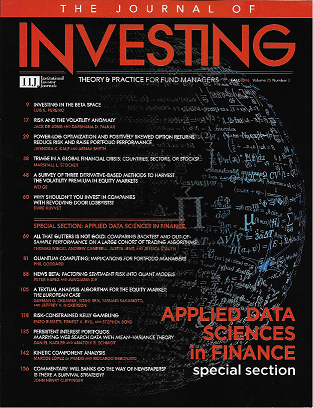
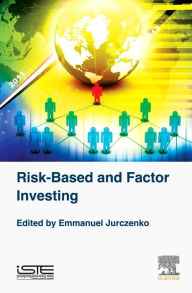
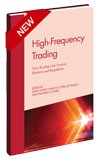
Easley, David ;
Lopez de Prado, Marcos ;
O'Hara, Maureen
(Coord.)
High Frequency Trading: New Realities for Traders, Markets and Regulators
Risk Books , 2013.
An overview of high frequency trading (HFT) strategies, with a particular focus on how low frequency traders can survive in a high frequency world.
Contributors include leading practitioners and academics in this field: Robert Almgren (Quantitative Brokers, New York University), Wes Bethel (Lawrence Berkeley National Laboratory), Ming Gu (Lawrence Berkeley National Laboratory), Terry Hendershott (U.C. Berkeley), Charles Jones (Columbia University), Michael Kearns (S.A.C. Capital, University of Pennsylvania), David Leinweber (Lawrence Berkeley National Laboratory), Oliver Linton (University of Cambridge), Albert Menkveld (University of Amsterdam), Yuryi Nevmyvaka (University of Pennsylvania), Richard Olsen (Olsen Ltd.), Oliver Ruebel (Lawrence Berkeley National Laboratory), George Sofianos (Goldman Sachs), Michael Sotiropoulos (Bank of America Merrill Lynch), Kesheng Wu (Lawrence Berkeley National Laboratory), and Jean-Pierre Zigrand (London School of Economics).
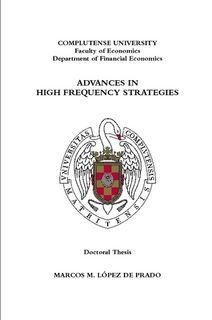
Lopez de Prado, Marcos
Advances in High Frequency Strategies
Complutense University , 2011.
This is the author's second doctoral dissertation. The generalization of electronic markets and ubiquitous automation of financial transactions has rendered many established models and theories obsolete. This work presents a new scientific framework for the study of some of the most relevant questions concerning High Frequency Trading.
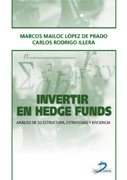
Lopez de Prado, Marcos
Invertir en Hedge Funds
D�az de Santos , 2003.
This is the author's first doctoral dissertation, which dealt with portfolio optimization, risk management and capital allocation to hedge funds. Once hedge funds' hidden risks are taken into account, optimal allocations are much smaller than proposed by the standard Markowitz approach.
AUTHORS
YEAR
TITLE
SUMMARY
Lipton, Alexander; Lopez de Prado, Marcos
20 20
Mitigation Strategies for COVID-19: Lessons from the K-SEIR Model
We propose an extension to SEIR, the standard epidemiology model. Our approach models the dynamics of heterogeneous groups. This is important for managing the spread of COVID-19, because the disease does not impact equally the entire population.
Lopez de Prado, Marcos
2019
Testimony before the U.S. House of Representatives - Committee on Financial Services - Task Force on Artificial Intelligence
I have divided this testimony into four sections, which discuss: (1) several types of automation currently being deployed in capital markets and the financial sector, and how they affect decision-making; (2) how machine learning (ML) and automation can help and hurt workers by disruption of the current and future financial services workforce; (3) what �RegTech� is and how ML can be deployed to help regulators better supervise financial institutions; and (4) algorithmic bias.
Lopez de Prado, Marcos
2019
Estimation of Theory-Implied Correlation Matrices
This paper introduces an algorithm to estimate forward-looking correlation matrices implied by economic theory. Given a particular theoretical representation of the hierarchical structure that governs a universe of securities, the method fits the correlation matrix that complies with that theoretical representation of the future.
Lopez de Prado, Marcos
2019
A Robust Estimator of the Efficient Frontier
Convex optimization solutions tend to be unstable, to the point of entirely offsetting the benefits of optimization. This instability can be traced back to two sources: (1) noise in the input variables; and (2) signal structure that magnifies the estimation errors in the input variables. We introduce a new optimization method that is robust to signal induced instability.
Lopez de Prado, Marcos
2019
Beyond Econometrics: A Roadmap Towards Financial Machine Learning
This article demonstrates that each analytical step of the econometric process has a homologous step in ML analyses. By clearly stating this correspondence, my goal is to facilitate and reconcile the adoption of ML techniques among econometricians.
Lopez de Prado, Marcos
2019
Ten Applications of Financial Machine Learning
This article describes ten notable financial applications where ML has moved beyond hype and proven its usefulness. This success does not mean that the use of ML in finance does not face important challenges. The main conclusion is that there is a strong case for applying ML to current financial problems, and that financial ML has a promising future ahead.
Lopez de Prado, Marcos ; Lewis, Michael J.
2018
Confidence and Power of the Sharpe Ratio under Multiple Testing
Most papers in the financial literature estimate the p-value associated with an investment strategy, without reporting the power of the test used to make that discovery. In this paper we provide analytic estimates to Type I and Type II errors for the Sharpe ratios of investments, and derive their familywise counterparts. These estimates allow researchers to carefully design experiments with high confidence and power.
Bailey, David H. ; Borwein, Jon M. ; Salehipour, Amir; Lopez de Prado, Marcos ; Zhu, Jim
2015
Backtest Overfitting Demonstration Tool: An Online Interface
In this study we introduce two online tools, the Backtest Overfitting Demonstration Tool, or BODT for short, and the Tenure Maker Simulation Tool, or TMST, which illustrate the impact of backtest overfitting on investment models and strategies. We describe BODT and TSMT, the experiments they perform, together with technical details such as the evaluation metrics and parameters used.
Lopez de Prado, Marcos
2015
Generalized Optimal Trading Trajectories: A Financial Quantum Computing Application
Generalized dynamic portfolio optimization problems have no known closed-form solution. These problems are particularly relevant to large asset managers, as the costs from excessive turnover and implementation shortfall may critically erode the profitability of their investment strategies. In this brief note we demonstrate how this financial problem, intractable to modern supercomputers, can be reformulated as an integer optimization problem. Such representation makes it amenable to quantum computers.
Carr, Peter; Lopez de Prado, Marcos
2014
Determining Optimal Trading Rules without Backtesting
We present empirical evidence of the existence of optimal trading rules (OTRs) for the case of prices following a discrete Ornstein-Uhlenbeck process, and show how they can be computed numerically. Although we do not derive a closed-form solution for the calculation of OTRs, we conjecture its existence on the basis of the empirical evidence presented. Also available in ArXiv.
Pseudo-mathematics And Financial Charlatanism Pdf
Source: https://www.quantresearch.org/Publications.htm
Posted by: grahamsatchis.blogspot.com

0 Response to "Pseudo-mathematics And Financial Charlatanism Pdf"
Post a Comment